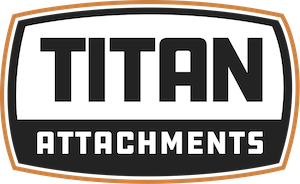Clearing land for new projects and repurposing overgrown land can be a big endeavor, and the processes involved come with their own set of challenges. This guide will walk you through effective methods for disposing of debris and provide helpful tips for reclaiming overgrown land for a fresh start.
Effective Debris Disposal After Land Clearing
Proper debris disposal is crucial for maintaining environmental standards and ensuring a smooth transition to the next phase of your project. But how do you dispose of the specific type of debris you’re left with after land clearing? Keep reading for some helpful tips on managing different types of debris:
Organic Debris
Organic debris, like branches and leaves, can be removed or repurposed in several ways:
-
Composting and Mulching: Transform organic matter into compost or mulch. This not only reduces waste but also enriches your soil. Using a mulcher makes it easy to give your debris a second life that can benefit your land.
-
Chipping: Use a wood chipper to break down branches and logs into chips. These can be used as ground cover or for landscaping purposes.
-
Transporting: A good loader bucket can make moving large amounts of debris easy and efficient. You’ll want to choose a bucket appropriate for the material you plan to move.
Construction and Demolition Debris
If you’re left with debris like concrete and metal after construction and demolition jobs, check out these disposal tips:
-
Recycling: Concrete can be crushed and used as a base material for roads or other construction projects, while metal should be sorted and recycled to reduce landfill waste.
-
Hazardous Materials: Ensure proper disposal of hazardous materials, such as asbestos or chemicals, by following local regulations and guidelines.
Stumps and Large Roots
Removing stumps and large roots can be challenging but is essential for prepping your land. Luckily, you have a lot of options when it comes to tree removal:
-
Stump Grinder: A stump grinder grinds stumps down to below ground level, turning them into mulch or soil that can be reused.
-
Stump Bucket: For full tree removal, consider using a stump bucket. Be sure to select the right size bucket for your stump.
-
Grapple: Once you’ve removed your stump, you’ll need the right tool to transport it. Grapples make easy work of moving stumps safely and securely.
-
Tree Puller: A tree puller can be used to get rid of both tree stumps and root systems, but you’ll want to be sure your tree puller is compatible with the size of the tree stump you want to remove.
-
Tree Shear: Tree shears significantly cut down on time and labor and can be a great tool for felling trees that you intend to use as firewood as they provide a clean cut.
-
Ripper: After removing tree stumps, you’ll want to consider removing leftover roots to ensure no new tree growth occurs and to prevent the roots from wrapping around pipes or damaging foundations. A ripper can help remove roots quickly and efficiently after tree stump removal.

Reclaiming Overgrown Land for New Use
Once you’ve disposed of your debris, it’s time to reclaim your land. This involves a few steps, each addressing specific challenges to turn overgrown land into a usable space.
Legal and Environmental Considerations
-
Regulations and Permits: Check local regulations regarding land reclamation and obtain necessary permits to ensure compliance.
-
Environmental Impact: Conduct an environmental impact assessment to minimize harm and incorporate conservation practices.
Assessment and Planning
-
Evaluate the Terrain: Identify obstacles, such as uneven ground or invasive species.
-
Create a Plan: Develop a detailed reclamation plan with clear objectives and timelines.
Clearing and Preparation
-
Vegetation Removal: Use appropriate tools or machinery to clear any remaining unwanted vegetation and debris. This may include dozers, chainsaws, or brush cutters.
-
Soil Testing: Conduct soil tests to assess its quality and fertility. This information will guide your soil improvement efforts.
Addressing Common Issues
-
Soil Quality: Poor soil may require compost or fertilizers to improve fertility and structure.
-
Invasive Species: Manage invasive plants with herbicides or by manually removing them to prevent them from overtaking the land.
-
Water Management: Address drainage issues and implement irrigation systems as needed to support future land use.
-
Topography: For uneven terrain, consider leveling or contouring to create a stable foundation for new developments.
Tools and Equipment
-
Land Maintenance Equipment: Select equipment such as excavators, backhoes, or skid steer loaders based on the scale of your project.
-
Maintenance Tools: Using the right tools for the job makes a huge difference in efficiency, not only when disposing of debris, but also when maintaining your land.
Professional Assistance
-
Experts: Consider consulting land surveyors, environmental consultants, or reclamation specialists if the project complexity exceeds your capacity.
-
Benefits: Professionals bring expertise and equipment that can expedite the process and ensure compliance with regulations.
Success Stories and Maintenance
Learn from others who have successfully reclaimed overgrown land:
Conclusion
Disposing of debris and reclaiming overgrown land may feel intimidating, but with a little planning and the right approach, your land can become a valuable asset. By following these guidelines, you’ll save time and eliminate unnecessary manual labor, paving the way for new opportunities and sustainable use.



